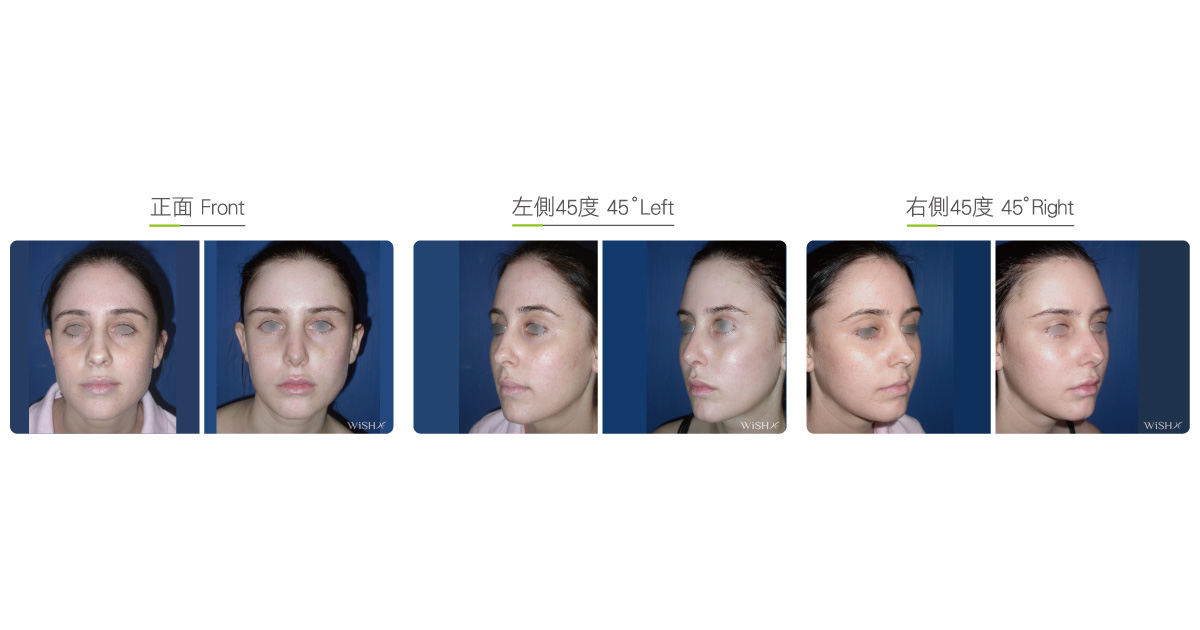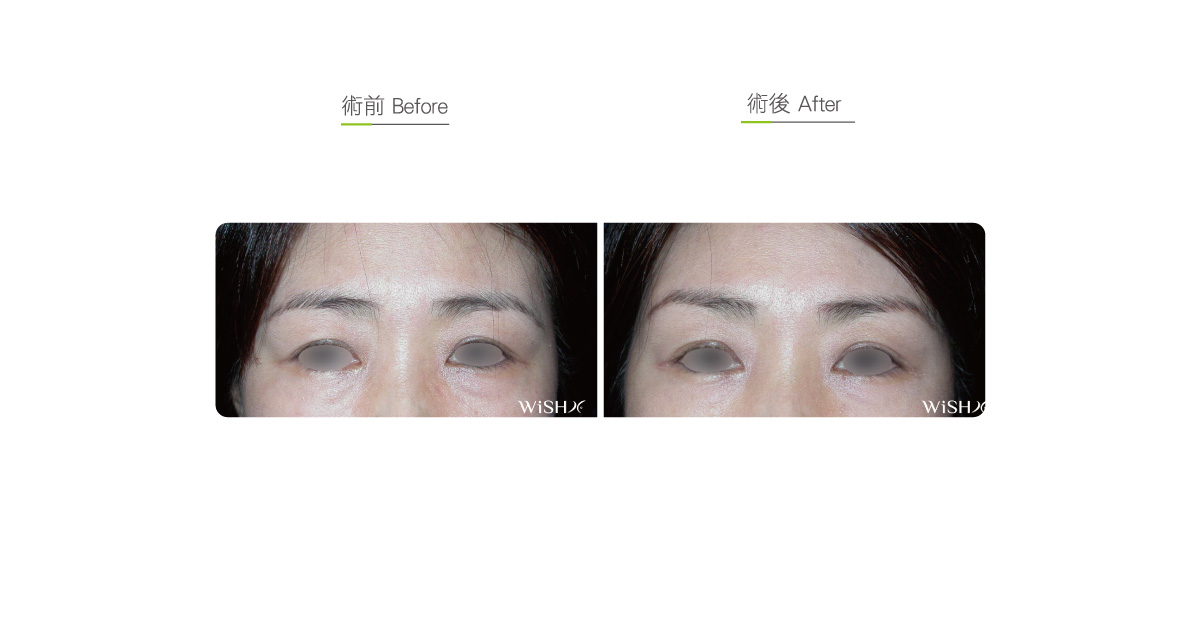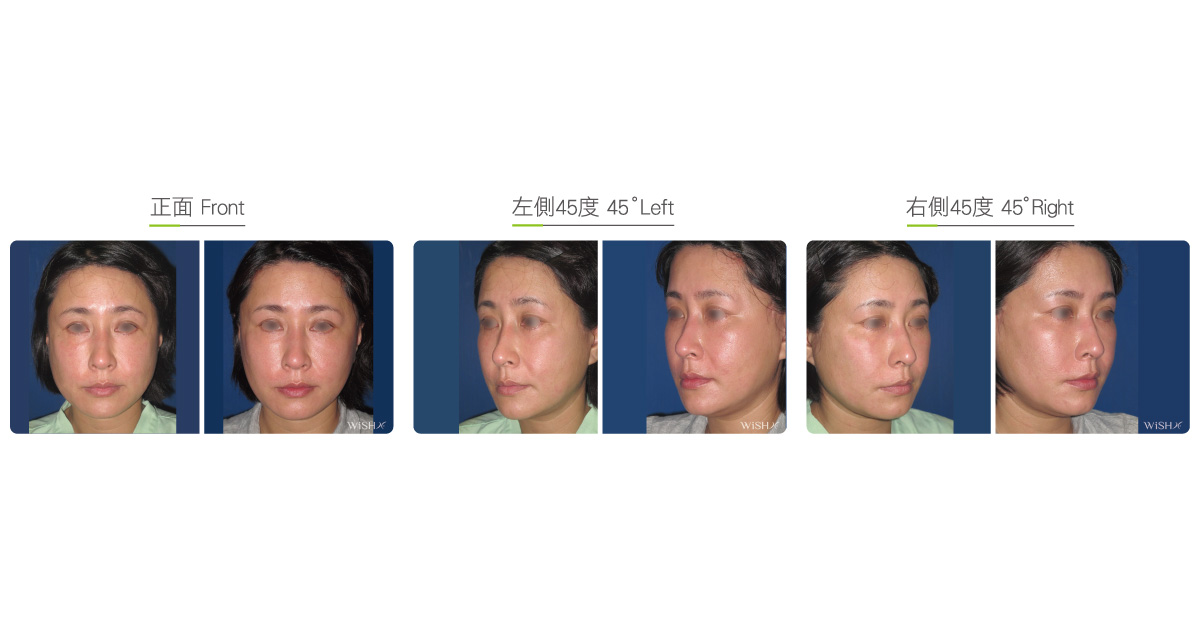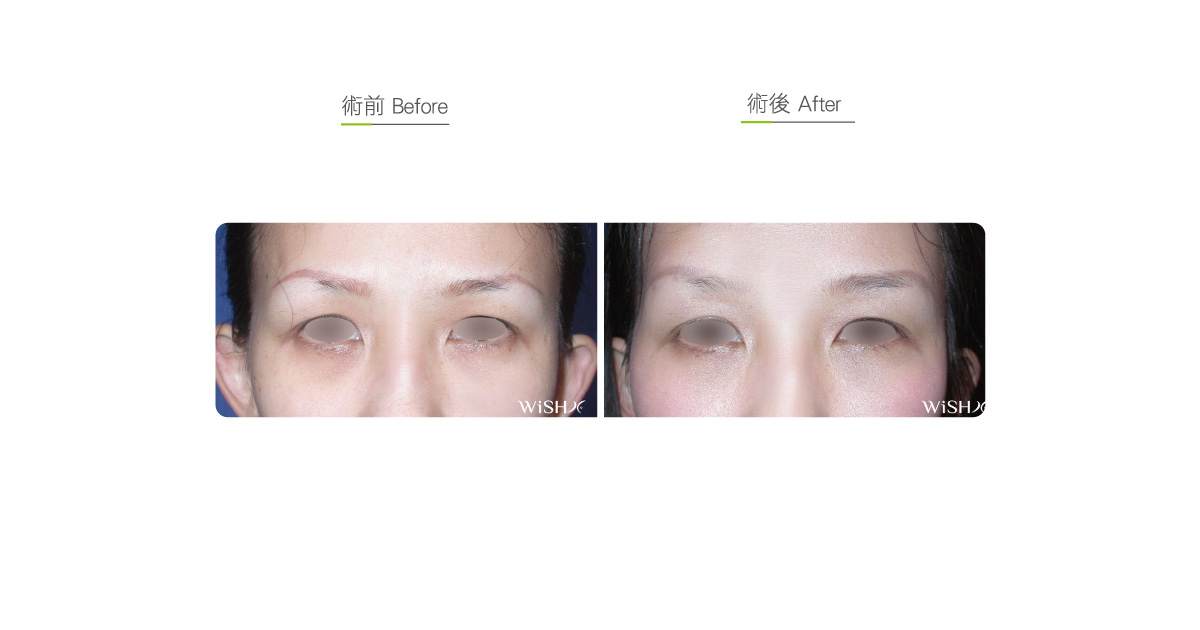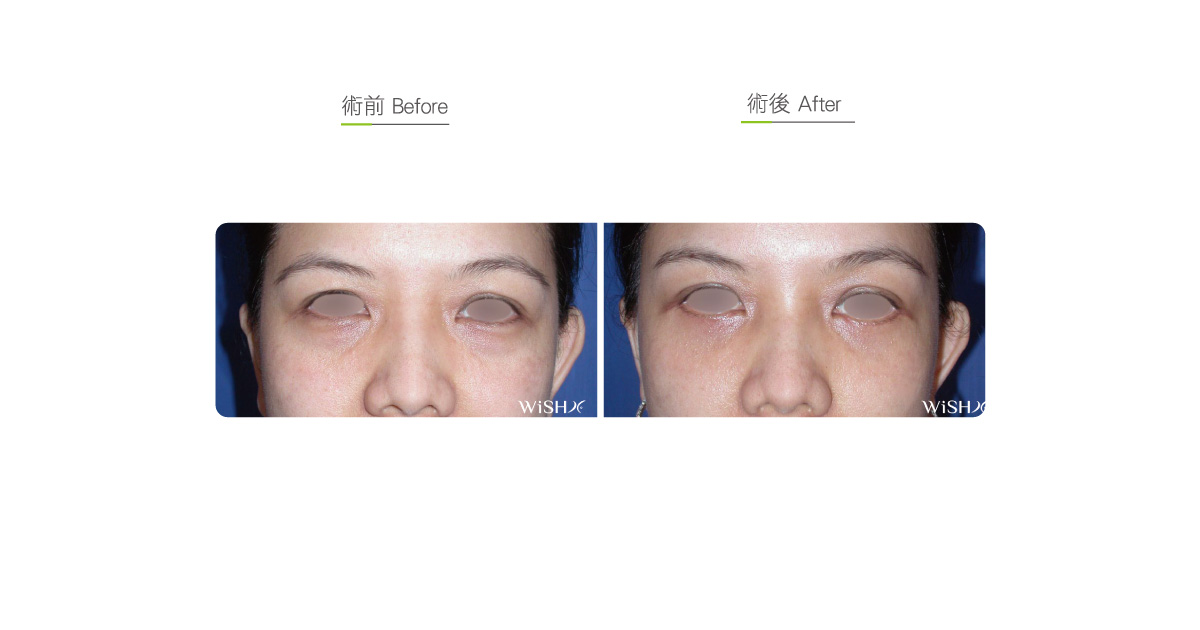Regional Brow Lift
The eyebrows (brows) are located at the lowest margin of the forehead but at the uppermost margin of the eyelid. Therefore, the aging of the forehead skin causes drooping and laxity of the brow or end of the brow in the initial stage. However, in severe cases, there may be ptosis caused by the downward compression of the brow (commonly called brow compression upon eyes) or drooping brows (slanted eyebrows), causing the space between the brow and eye to become narrower and the height of the eyelid’s double fold to become lower (blepharochalasis). The original double eyelids may even become lost because the eye gets covered. In general, these patients prefer double eyelid surgery to improve ptosis. However, if the eyebrows continue drooping without proper management, it may still affect the result of double eyelid surgery, which would then possibly require a secondary brow or forehead lift in the future. For aged patients with eyelid or brow/eye tail drooping due to a saggy forehead or young patients with congenital brow compression upon the eyes, priority is given to the treatment of the eyebrow position. This way, the surgery may radically address the eyelid and brow tail drooping and mitigate forehead or brow pressure to relieve chronic problems such as forehead or frowning wrinkles.
Regional brow lift, as a kind of mini facelift, demonstrates a significant treatment efficacy against common brow compression (compressing brow), excessively low brow (flat brow), or brow tail drooping as well as other local loose skin problems. This conventional operation is performed by first identifying the drooping area at the superior or inferior margin of the brow, then removing the loose skin before lifting the brow in the superior lateral direction, and finally, suturing at the forehead periosteum. This will deliver a quick and obvious brow (tail) lift effect. If the area is confined to the adjacent area of the brow tail, this operation boasts minimal invasiveness and rapid recovery. It is suitable for elderly patients unwilling to undergo forehead lift or double eyelid surgery. Moreover, young patients with congenital brow compression can opt for another method of distal brow lift. In this case, a 2cm incision is made along the margin of the scalp hairline for subcutaneous dissection of the deep fascia layer ahead to the superior lateral margin of the brow bridge. Some absorbable lift threads such as Quills or Silhouette are embedded under the skin to distally lift the fascia and are sutured in the proximal scalp tissue. This method mainly relies on the tension of the suture to elevate the brows. Although it is able to hide scars and is minimally invasive, it may not offer a long-lasting effect in some cases. Nevertheless, it is appropriate for young patients who desire a natural change and rapid recovery.
Surgical conditions
Duration
- Type of anesthesia: Intravenous (IV) sedation + local anesthesia
- Type of incision: Incision of approximately 1.5–2 cm at the superior or inferior eyebrow margin or an incision of approximately 2 cm at the scalp hairline
- Recovery: 3–5 days
- Removal of sutures: 7 days
General instructions
No food and water on the day of surgery
- Smoking, alcohol consumption, and raw or sea foods should be avoided for 1 month postoperatively.
- Scar care should be continued for 3 months postoperatively.
Ideal candidates
- Young patients with congenital low-position eyebrows.
- Patients with eyebrow compression upon the eyelids or eye tails due to forehead laxity (brow tail compression).
- Patients who have slight brow drooping but are unwilling to undergo total forehead lift.
- Patients with excessively short brow-eye distance due to obvious brow compression and not suitable for double eyelid surgery.
- Patients who with narrowing double eyelid folds due to brow compression but are not willing to undergo double eyelid surgery.
- Patients pursuing natural changes and rapid recovery.
- Patients with bilateral brows at different levels.
- Patients desiring customized special brow patterns.
Possible complications
- Scars
- Hair loss (alopecia) at the scalp
- Incomplete correction
Surgical advantages
-
Safe and rapid recovery.
-
No need for a major surgery to improve eye tail drooping (e.g., forehead lift).
-
Able to concurrently lift brows and upper eyelids and improve bilateral ptosis.
-
Alleviates ptosis and other glazed eyesight or swollen eyelid problems.
-
Able to customize brow patterns or conduct fine adjustment in light of patients’ requirements.
-
Avoid the risks and complications of incisional double eyelid surgery.
Surgical drawbacks
-
Scars may be left at the brow margins (direct brow lifts).
-
There might be local hair loss at the scalp incisions (thread lifts).
-
Forehead or brow drooping may not be completely improved.
-
The eye shape or different sizes of the two eyes may not be adjusted in the course of a double eyelid surgery.
-
The surgical effects are relatively short (3–5 years on average).

